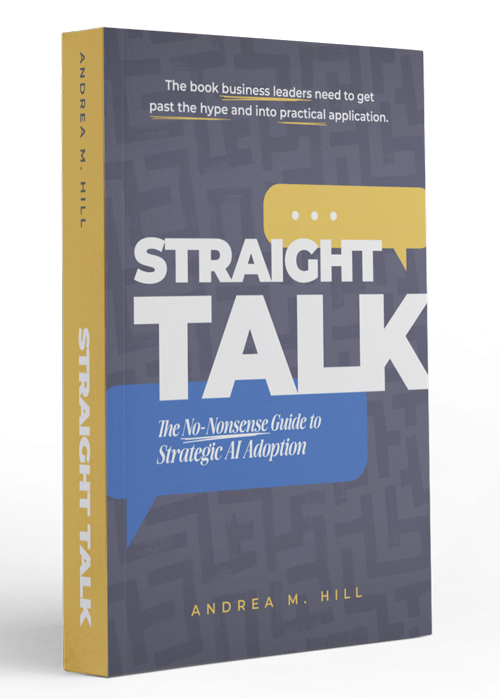Don't Be Papua New Guinea: Know Your Critical Numbers

The nation of Papua New Guinea has no idea how many people it has. The official count, according to this article in Financial Times, is 9.4 million, but other valid data shows that the population may be closer to 17 million. Apparently when asked to guess, the Prime Minister thought the population might be closer to 11 million.
That’s an entertaining factoid … until it’s not. How does a nation without any grasp on its population provide services? Collect taxes? Build schools and hospitals? Calculate wear and tear on roads?
Before you finish shaking your head at the short-sightedness of others and go on with your life, let me ask you this: Do you know the number and value of leads in your sales pipeline right now? Do you know what percentage of those leads will ultimately close, and how long it will take for the average lead to move through each phase of the pipeline? Do you know what the dropoff will be from phase to phase? Can you make an accurate revenue forecast based on that activity? Are you using those accurate sales forecasts to create cash flow forecasts?
Most B2B small and medium-sized enterprises are still managing sales with 20th Century sales tactics.
- Exhibit at (or walk) trade shows to collect leads
- Run ads in trade magazines
- Buy industry lists
- Send cold emails
- Hire lead-generation services
Some (but by no means all) B2B SMEs have beefed up websites to get more inbound leads, and have their marketing departments nurture those leads until they are qualified, at which point the leads are thrown over the wall to sales. All these methods tend to be used as individual tactics, different sales people preferring some of those tactics over others.
But that kind of I’ll do it my way you do it your way sales method throws strategy out the window and leaves business owners without the control they need to manage growth. Falling short on sales goals is obviously hard on cash flow and profits. But coming in far ahead of sales goals can cause operational and quality problems that reverberate through the organization and cause customers to lose trust.
What’s necessary is to consistently fill the sales pipeline with relevant leads and to be able to reasonably predict how that pipeline activity will relate to sales in both timeframe and dollars/pounds/euros/etc.
Many people incorrectly believe that sales forecasting is just a glorified term for dusting off the crystal ball and making a prediction, but that couldn’t be further from the truth. Companies using modern tools for sales management are able to build, manage, monitor, and analyze sales pipelines to increasingly accurate degrees.
From a sales perspective this degree of control over sales is incredibly empowering. Each day the salesperson can look at what’s in the deal pipeline and proactively do the work to keep moving all their prospects and re-purchasing customers through to close. Even better, managing this way eventually leads to insight about what causes prospects to drop off between phases, which in turn can lead to the development of resources to mitigate the dropoff and improve close rates (and therefore, revenue).
From a management perspective, the benefits are even greater. Discussion about the challenges of managing distance employees has been a pandemic-era phenomenon, but challenges around maintaining visibility to sales team performance — many of whom have always worked from a distance all or part of the time — are well-known. Using the proper tools for sales enablement, sales managers can see how each team member is doing relative to managing their deal pipelines, coach them in specific rather than generic ways, and gather insights useful for training, product line and channel alignment.
If you are a member of a Fortune 1000 sales team, then this information is probably old hat. But for the majority of small and medium-sized enterprise owners, the tools necessary for this type of sales enablement have been unaffordable and largely unimplementable until very recently.
Salesforce has long been recognized as a sales enablement tool, but in recent years HubSpot has added a suite of features specifically designed for holistic management of an account-based marketing (ABM) strategy. For the smallest businesses, Keap can be used for sales enablement as well, though without some of the automation and integration benefits more readily available with HubSpot and Salesforce.
Unfortunately, ineffective implementation of sales enablement platforms has left a bad impression on many sales teams. These problems are actually relatively easy to fix systemically, but resistance at the individual and sometimes cultural level frequently gets in the way.
At StrategyWerx, we embrace a technology agnostic approach to systems implementations. This enables us to remain objective about fitting customers with the right tools for their strategy, organization, technology stack, and culture. We maintain certifications in many different software applications and platforms in order to support our customers, and by maintaining relationships with platform providers we are also often able to pass on access to additional services and/or savings. Looking at the three main marketplace sales enablement tools, we tend to frame them in these ways:
- HubSpot: For larger small businesses (10 employees and up) through large enterprises with significant B2B sales pipelines that also pursue a significant marketing practice (inbound, outbound, and/or ABM).
- Salesforce: For medium and large enterprises fielding large sales forces with more focus on channel selling than marketing. Salesforce’s marketing features and automation are not as developed as they could be as they still rely on 3rd party tools.
- Keap: For small businesses (10 employees and under) that want to implement basic sales pipelines and integrate them with marketing. Keap’s toolset is much smaller than that of HubSpot or Salesforce, but the pricepoint is more accessible for small businesses and toolset is sufficient for most companies at the beginning stages of growth.
With 80% of business owners concerned about labor shortages in 2023 and 38% already planning to hire, it’s no surprise that business automation is high on planned investment lists. Just remember that business automation isn’t just about administrative and operational benefits … sales and marketing enablement and automation should be a big part of those investment calculations. Not only will the right tools save you time and improve productivity and quality, they can also shorten the time from lead to invoice and increase the number of leads you convert.
Andrea Hill's
Latest Book
Straight Talk
The No-Nonsense Guide to Strategic AI Adoption

Where other books focus on prompts and tools, this book gives business leaders what they actually need: the frameworks and confidence to lead AI adoption responsibly, without having to become technologists themselves.
Also available at independent booksellers and public libraries.
Are You Ready to Do Better Growth Management?
StrategyWerx is all about growth strategy and management. That means giving you the tools you need to develop sound strategies, structure your organization to lay the track ahead of the train, and implement the tools you need to grow. Ready to learn more about how we do that? Book a free consult and bring your questions. See if you like working with us on our dime, and get some good advice in the process.